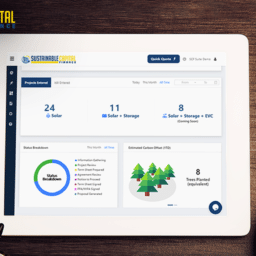Regulatory News
DOE Baseload Power Plant Cost-Recovery Proposal to FERC
Earlier this month, the DoE proposed cost-recovery provisions for baseload power plants helping keep nuclear and coal power plants online as they struggle with high operating costs while simultaneously competing with cheap natural gas and increasingly cheaper renewable energy resources. The FERC will take appropriate action within the timeframe established by the DOE with initial comments due by October 23rd. Robert Powelson, FERC Commissioner, criticized the DOE proposal decrying that this NOPR rule would destroy wholesale power markets.
USEPA (Pruitt) Repealing Clean Power Plan (Obama)
On October 10th 2017, US EPA Administrator Scott Pruitt signed a proposal to repeal the Clean Power Plan, a rule established during the Obama administration attempting to corral carbon emission from the power sector. Pruitt did not suggest a replacement policy, but merely asked the industry to craft an updated carbon rule. Pruitt’s focus would be on internal improvements to coal-based power generation vs requiring utilities to offset their carbon emissions through Renewable Energy Credits (RECS).
Section 201 Ruling
The Suniva trade dispute began when America’s biggest PV panel manufacturer Suniva filed an ill-advised petition with the U.S. International Trade Commission (ITC) on April 26, 2017. Two of our team members wrote an industry analysis on the topic. Read More Here!
Utility News
The Domestic Coal Fleet Continues Towards Retirement
As the DOE, EPA, and FERC all deal with the policies behind coal-based generation, the economics are becoming increasingly challenging for Coal plants to compete with other generation sources. A report by the Union of Concerned Scientists disclosed that roughly 25% of all remaining coal plants are expected to close or convert to natural gas. An additional 17% are at risk for early retirement due to natural gas generation. Many more will struggle to compete if there are changes in fuel or operating costs. From 2008 to 2016, the coal component of the US generation portfolio went from 51% to 31% mostly due to market forces (affordability of natural gas & renewable energy resources). A real-time example of this is with Luminant, a power generation business, that plans to retire it’s coal-fired plant in Monticello, Texas in January due to market economics, not environmental regulations.
Technology News
Microsoft continues advancing its renewable portfolio
Microsoft agreed to support a wind project in Ireland that will be the first European wind farm to integrate batteries into each turbine. The technology giant entered into a 15 year power purchase agreement (PPA) with GE to purchase all the generation from the 37 MW Tullahennel wind farm.
Bridgestone World Solar Challenge
Since its inception 30 years ago, the Bridgestone World Solar Challenge has been pushing the needle on cars powered exclusively from solar power. Originally in 1987, the solar arrays that were used were allowed to be 8 sq meters. In 2007 that size was reduced down to 6 sq meters and this year’s race has an even more stringent requirement of 4 sq meters. Only 30% of teams complete the journey and this year’s challenge is ramping up to be the toughest yet. The first place teams are expected to complete the journey from Darwin to Adelade, Australia (1,864 miles) on Friday October 13th.
Green Charge Announces Largest Energy Storage Project yet with New Financing Model
Green Charge, an energy storage solutions provider & subsidiary of Engie, an international power producer, recently announced a 3 MW–6 MWh energy storage project in Massachusetts that is expected to go online in April 2018. The project utilizes the investment tax credit by charging from the Mt. Tom Solar plant that Engie built earlier in 2017. The storage system will be owned by PNC Bank and leased back to Green Charge who will operate it on behalf of Holyoke Gas & Electric, its municipal utility customer. Green Tech Media notes that Bank interest in owning energy storage systems is nascent and bodes well for the future of financing for these types of energy solutions.
About Sustainable Capital Finance: Sustainable Capital Finance (SCF) is a third party financier & owner/operator of commercial & industrial (C&I) solar assets and is comprised of experts that specialize in structured finance and solar development. SCF has a vast network of EPCs and Developers across the US that submit project development opportunities through SCF’s cloud-based platform, the “SCF Suite”. This allows SCF to acquire and develop early to mid-stage C&I solar projects, while aggregating them into large portfolios.












